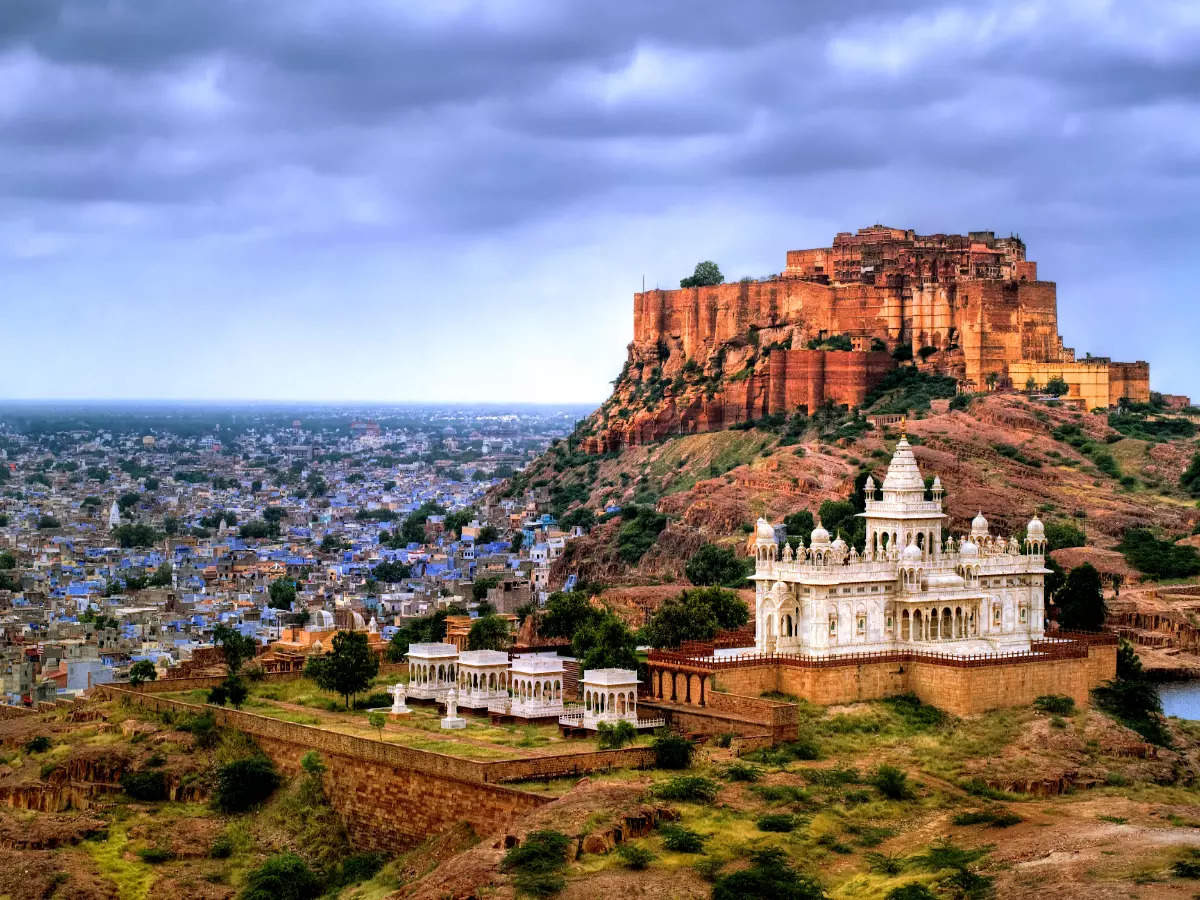Mehrangarh Fort Jodhpur: Stories Etched in Stone and Sky
Mehrangarh Fort Jodhpur: Stories Etched in Stone and Sky
Blog Article
The Architectural Magnificence of Mehrangarh Fort
Perched 400 feet above the city of Jodhpur, Mehrangarh Fort is one of the largest and most well-preserved forts in India. Its colossal walls, some up to 36 meters high and 21 meters wide, blend seamlessly into the rocky hilltop. The fort’s gates—like Jai Pol and Fateh Pol—narrate tales of Rajput victories and invasions. Inside, visitors encounter a labyrinth of courtyards, palaces, and temples that reflect a seamless integration of Rajput and Mughal architecture. Each section, from the intricate carvings of Phool Mahal to the royal artifacts in Moti Mahal, showcases the craftsmanship of 17th-century artisans.
Historical Significance and Lineage
Constructed in 1459 by Rao Jodha, the founder of Jodhpur, Mehrangarh Fort has witnessed centuries of battles, diplomacy, and dynastic rule. It remained the seat of the Rathore dynasty for many generations and is still managed by the royal family. The fort played a strategic role in Marwar's defense system, providing a vantage point over the city and surrounding Thar Desert. Inside its museum, visitors can find weapons, manuscripts, and royal attire that offer a glimpse into the rich history of the region.
Intricate Palaces and Galleries
Mehrangarh Fort is home to several ornate palaces, each with a unique story and architectural identity.
Sheesh Mahal (Mirror Palace): A room decorated with intricate mirror work on the walls and ceilings.
Phool Mahal (Flower Palace): Once a pleasure chamber for kings, this hall showcases gold filigree and dazzling paintings.
Jhanki Mahal: Known for its cradle gallery, this palace displays baby cradles used by royal families.
Moti Mahal (Pearl Palace): One of the oldest structures, it once served as a royal court. Colored glass windows filter sunlight into hues that bathe the room, offering a visual spectacle.
The fort also includes galleries displaying elephant howdahs, palanquins, textiles, and musical instruments used by Jodhpur’s royal household.
Panoramic Views of the Blue City
Mehrangarh Fort offers sweeping views of Jodhpur, known as the Blue City due to the cluster of blue-painted houses below. The contrast between the earthy sandstone of the fort and the azure townscape is visually stunning, particularly during sunrise or sunset. This natural viewpoint makes it a favorite spot for photographers and heritage enthusiasts.
Visitors often walk along the fort’s ramparts to capture panoramic vistas of the old city, Umaid Bhawan Palace in the distance, and the golden stretch of the Thar Desert on the horizon.
The Legend Behind Its Foundation
Mehrangarh Fort is not just a historical structure but also the subject of legends and myths. According to local lore, when Rao Jodha decided to build the fort, a hermit named Cheeria Nathji, who lived on the hill, was displaced. Angered by his eviction, he cursed the fort to be dry and barren. To counter this, a man named Rajaram Meghwal was buried alive in the foundation as a form of sacrifice. Today, a small memorial marks this spot inside the fort as a tribute to him.
Events and Cultural Exhibitions
Mehrangarh Fort continues to be a center for culture and the arts. It hosts events such as the Rajasthan International Folk Festival (RIFF) and the World Sacred Spirit Festival. These gatherings attract musicians, scholars, and travelers from around the world. The fort’s courtyards become alive with folk music, traditional dance, and vibrant performances that highlight Rajasthan’s living cultural heritage.
Timings, Entry Fees, and Visitor Information
Mehrangarh Fort is open to visitors from 9:00 AM to 5:00 PM every day. The entry fee for Indian tourists is generally around INR 150–200, while foreign tourists may pay INR 600–700, which includes access to the museum. Audio guides are available in multiple languages to help visitors explore the site independently and gain historical context. Elevators are also available for senior citizens and differently-abled travelers.
Best Time to Visit and Travel Suggestions
The best time to visit Mehrangarh Fort is between October and March, when the desert climate is cooler and more comfortable. Travelers interested in exploring Rajasthan more deeply often combine their visit with other iconic destinations like Jaipur, Udaipur, and Jaisalmer. One ideal itinerary is the Best Rajasthan Tour Package, which offers a comprehensive route covering the state’s architectural, cultural, and natural highlights.
For those seeking a spiritual and cultural extension, the Golden Triangle Tour with Rishikesh provides a unique opportunity to visit Delhi, Agra, and Jaipur with the added serenity of the Ganges at Rishikesh. Similarly, heritage lovers can explore North India’s spiritual depth with the Golden Trianlge Tour with Varanasi, offering an experience that blends architecture, rituals, and sacred geography.
Travel Tips for Exploring Mehrangarh Fort
Wear comfortable shoes: There’s a lot of walking involved across uneven pathways.
Carry water: Especially in summer months when temperatures can soar above 40°C.
Photography: Photography is allowed in most sections, though some galleries might have restrictions.
Clothing: Dress modestly as Rajasthan retains its traditional and respectful values.
Early Entry: Arriving early helps avoid crowds and allows you to enjoy the fort in cooler hours.
Conclusion: A Testament to Rajasthan’s Glory
Mehrangarh Fort is more than just a tourist attraction; it is a living archive of Jodhpur’s regal past, architectural ingenuity, and cultural identity. From panoramic views to battle-scarred walls and folk performances, every part of the fort tells a story worth hearing. Whether you’re a history buff, photographer, or cultural explorer, this landmark offers a multifaceted experience that stays with you long after the visit.
Report this page